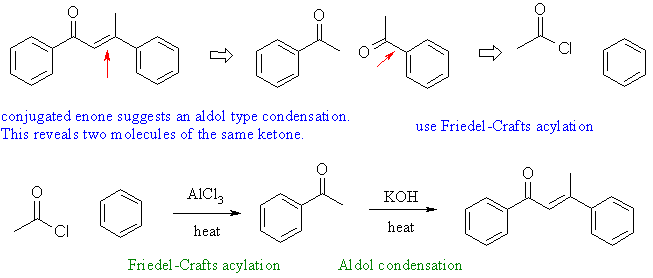
The key here is recognising the possibility of using an aldol reaction
that involves two molecules of the same simple aromatic ketone.
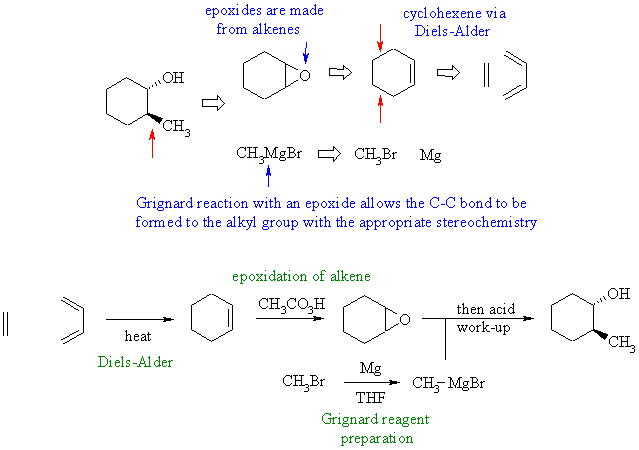
The best (shortest) route to get the defined stereochemistry is probably
by opening the epoxide using a Grignard reagent.
An alternate route could involve hydroboration of 1-methylcyclohexene.
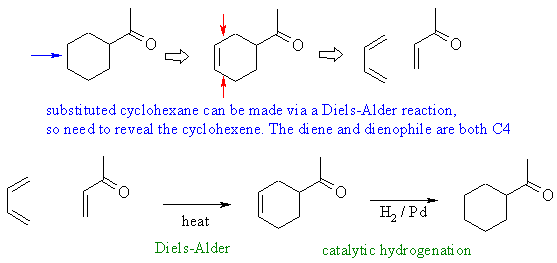
This is an "easy" question if you spot the Diels-Alder
possibility
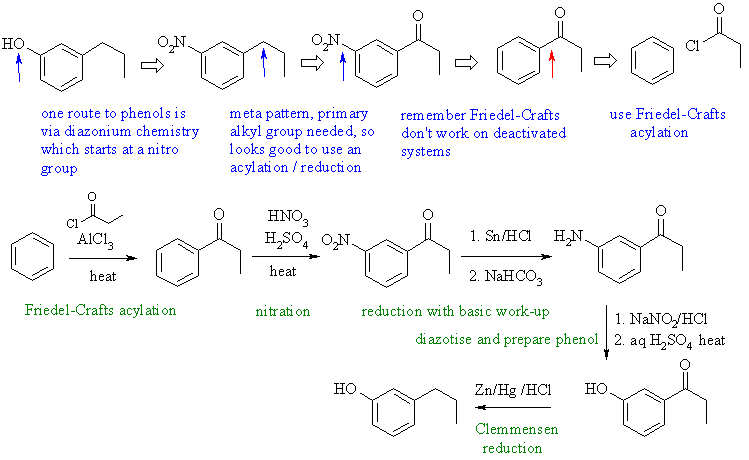
Order of events and reaction limitations in this example are important to ensure the correct regiochemistry.
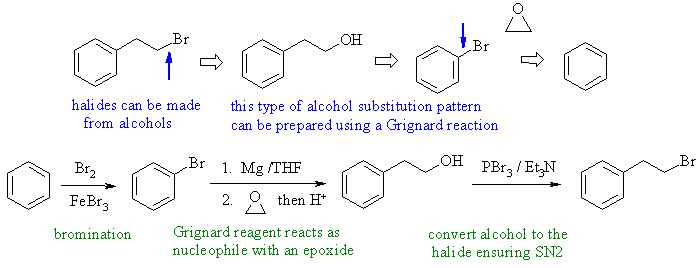
There are several possible routes to this primary halide. This route was selected for best selectivity.
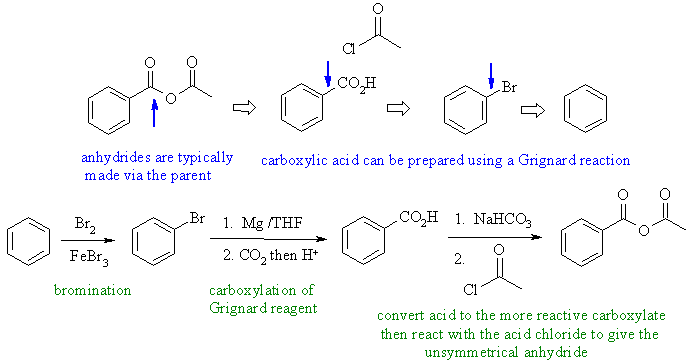
The target is an unsymmetrical anhydride, an acid derivative... remember
that they are made from the parent carboxylic acid.
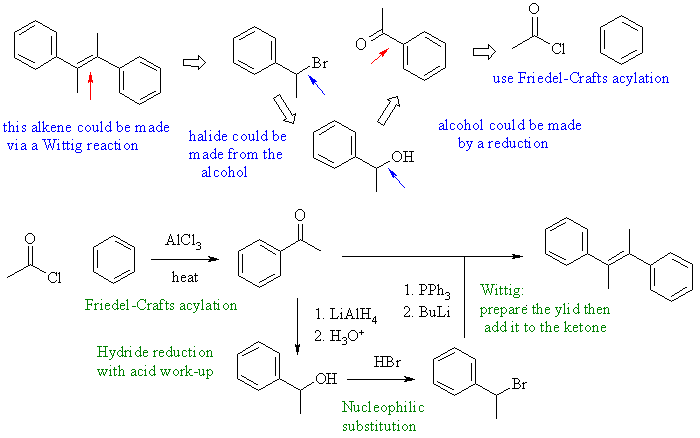
A good way to make alkenes is to use the Wittig reaction.
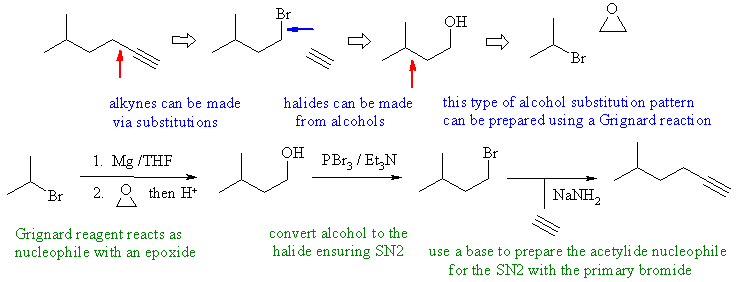
The use of the nucleophilicity of terminal alkynes and the chemistry of epoxides is important in this example.
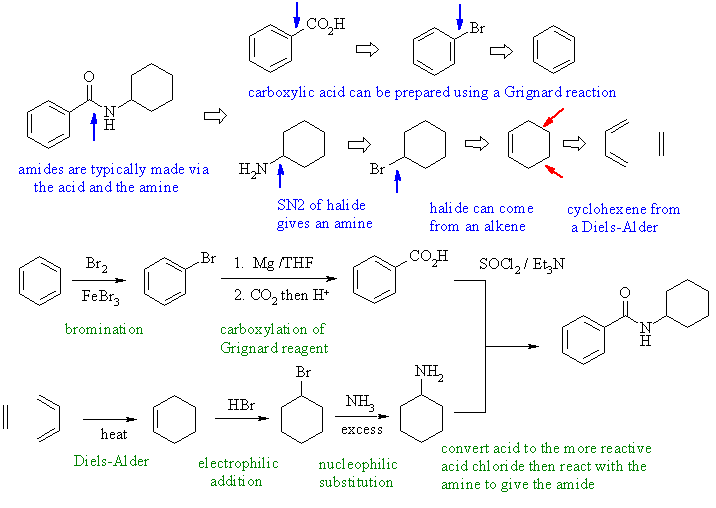
The target is an amide, an acid derivative... remember that they are made from the parent carboxylic acid.
![[Home]](mol.gif)